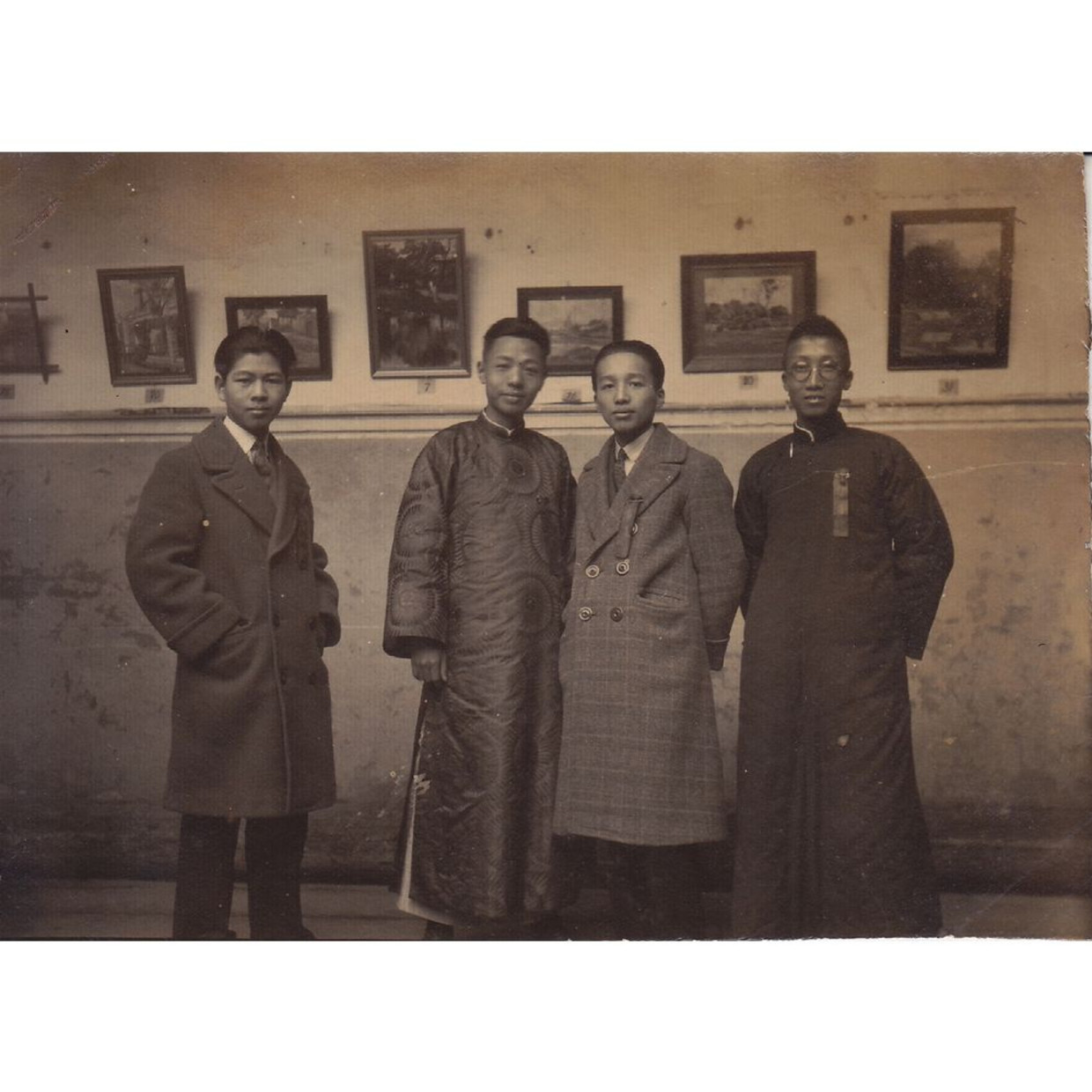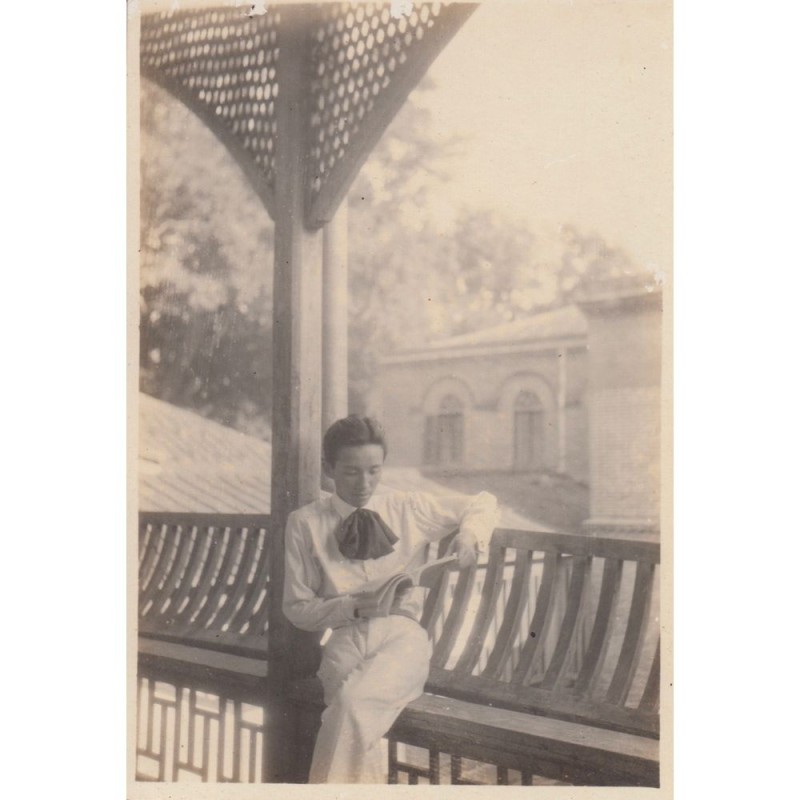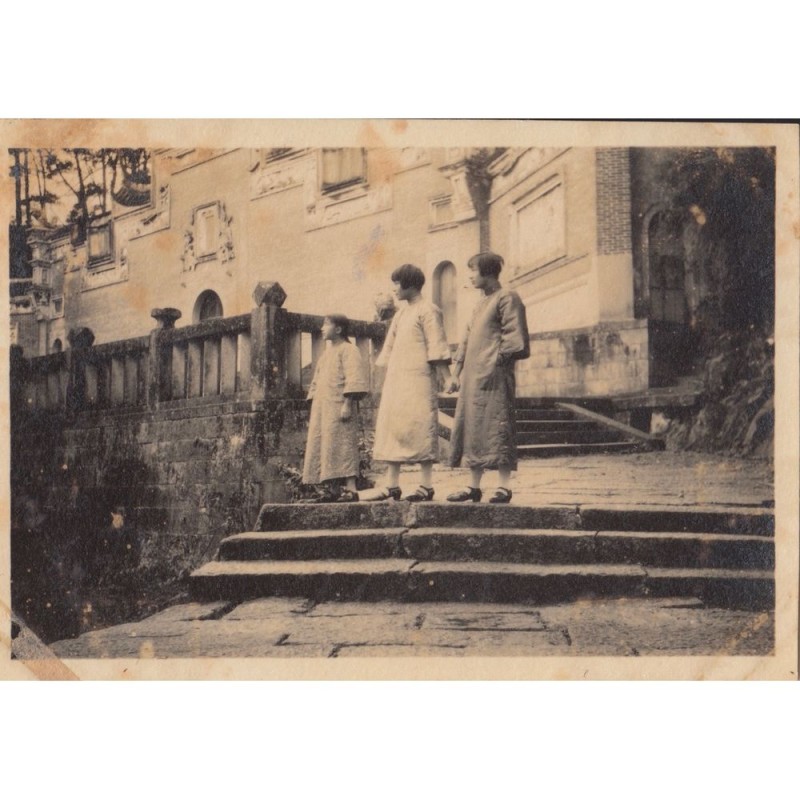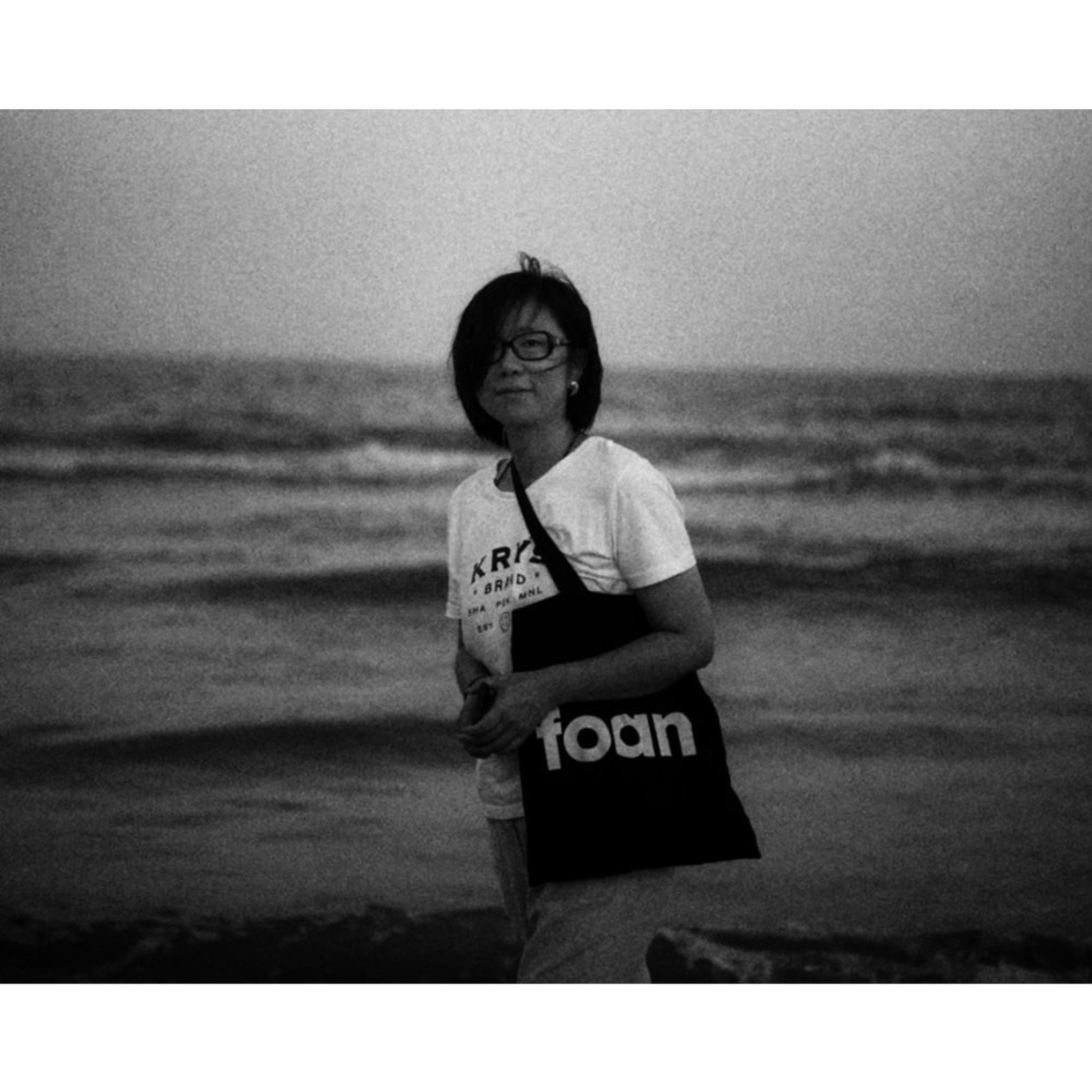
Liu Kang (1911-2004) is one of Singapore’s pioneer artists. Born in Fujian’s Yongchun county, his parents settled in Johore, Malaya when he was six years old. In 1926 he travelled to Shanghai to continue his high school education. That summer enrolled for art classes at the Shanghai Training School of Fine Arts, which was founded by Liu Haisu. Inspired by the experience, he become a full-time art student in the fall semester. After graduating from the Xinhua Art Academy in 1928, he traveled to Paris for further studies. In late 1932 he returned to Shanghai to take up Liu Haisu’s offer of a teaching position at the Shanghai Training School of Fine Arts. In August 1937, as the city came under siege, he departed for Malaya. He thought it was a holiday, but as it turned out he would not return to China until 1974. At the end of World War Two he settled in Singapore. Throughout his life Liu Kang had a keen interest in photography and was always carrying his camera. Many of his precious images from his early years in China in the 1920s and 1930s survive.
Fujian Province is deeply connected to Liu Kang’s ancestry as well as the kindship of many Chinese settlers in Southeast Asia. The opportunity to return to Fujian came unexpectedly when the Shanghai Training School of Fine Arts closed due to student protests in autumn 1927. To wait out the interruption Liu Kang followed his classmate and new best friend Chen Renhao (1908-1976) to his home in Fuzhou. During his six- month stay he became close to family members and formed a special bond with Chen Renhao's younger sister Chen Renbin. When Liu Kang was about to return to Shanghai, they became engaged with the blessing of her family. This trip to Fujian, his first after leaving for Southeast Asia at the age of six, enabled Liu Kang to reconnect with his roots and rediscover the beauty of his home province as a young adult.
Liu Kang's private albums have many photos associated with this Fujian visit. Ninety images have been selected for the exhibition. These are arranged in three parts. The largest consists of 59 images that record his stay with Chen Renhao’s extended family. The photographs capture the close friendship of the two young men. Of particular interest is the photograph of them attending a local art exhibition. Here we also see the younger family members playfully posing for the camera at home and on sightseeing excursions in and around Fuzhou.
The second part consists of 18 photos that were taken on a visit to Xiamen in the summer of 1928. Famous sites such as Nanputuo Temple, Gulangyu Islet, Jimei College, Xiamen University and Huxi Rock appear in the album. Liu Kang shared his holiday with Chen Renpin by sending her photographs that he carefully captioned on the reverse. To please his fiancé, he specially snapped a photo of the dormitory building of the Women’s Normal School at Jimei College in Xiamen. The photos are, in many ways, typical tourist shots -- candid and direct, perhaps taken in haste. While they lack the sophistication of some of his photographs of Shanghai and Paris, they provide a unique glimpse of the city through youthful eyes.
The third part displays about 14 images related to the close-knit community of Fujian art students in Shanghai. There were many students from Fujian Province studying at both the Shanghai Training School of Fine Arts and Xinhua Art Institute. The majority came directly from Fujian Province but there were others who were born in Fujian and later moved to Southeast Asia with their families. Graduation and alumni gatherings were commemorated with group photographs, with teachers from Fujian invited to participate.
This exhibition marks the first time that Liu Kang’s Fujian photographs, which were taken over 90 years ago, are being shown publicly. By displaying them in Fujian, Liu Kang has also, in a sense, once again returned to his homeland. Although he spent most of his life in Singapore, his deep affection for his ‘old home’ (lao jia) remined with him throughout his life.




Born in 1976, lives and works in Shanghai, Wang Xin is a Ph.D recipient in Art History, Director of Academic Repository Department of Shanghai Chinese Painting Academy. Research interests include Chinese modern and contemporary art history and Shanghai visual culture studies.
Wang Xin has taken part in a number of photography projects, including the exhibitions and publications of "Art with Audacity: Photos from the Albums of Liu Haisu and Liu Kang", "Shanghai Aura: Exploring Photographic Modernity in Early 20th Century", "Elapsed Time and Monumental Images — Chang Tsai, his Life and Photographs", "Commemorating Shanghai 1980s"; the exhibition, publication and forum of "Commemorating Shanghai 1990s". Wang Xin also curated "The Youth Photography Section at Shanghai Youth Fine Arts Exhibition 2013" and was responsible for the publication project "How They Accepted Photography: The Liu Haisu Museum and Photography". Wang Xin has been dedicated to the study of historical images of Shanghai painters and the Shanghai Art Academy.

born in Yongchun, Fujian Province. He is an acclaimed painter and one of the founders of modern art in Singapore. In 1926, he travelled to Shanghai and studied at Shanghai Art Academy and Xinhua Art Institute. From 1928 to 1932, he went to France for further study. During his stay, he developed a profound relation with his teacher Liu Haisu, who was the principal of Shanghai Art Academy at the time and was also studying in France. In the autumn of 1932, he accepted Liu Haisu's invitation to work as a professor of Western painting at Shanghai Art Academy. In 1937, he moved to Malaya and later settled in Singapore, where he was one of pioneer generation artists who founded the so-called "Nanyang School" of painting. His works are on permanent display at the National Gallery of Singapore. Apart from painting, photography is the artist’s other major interests and artistic practice in his life.
This website uses cookies
This site uses cookies to help make it more useful to you. Please contact us to find out more about our Cookie Policy.